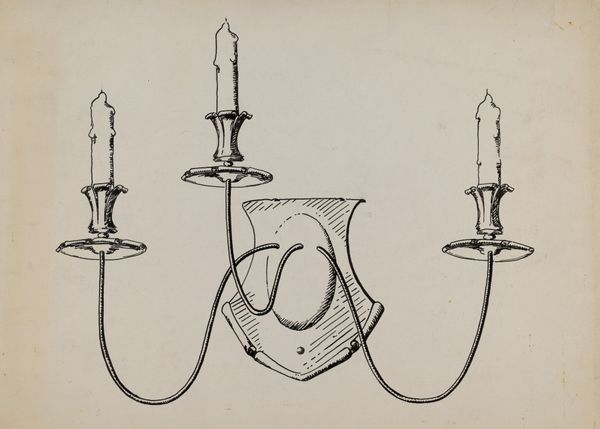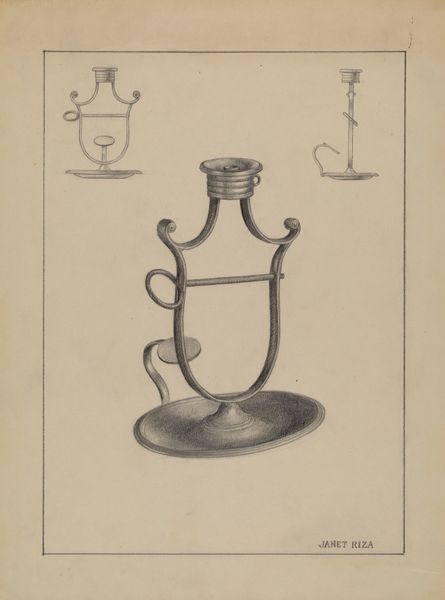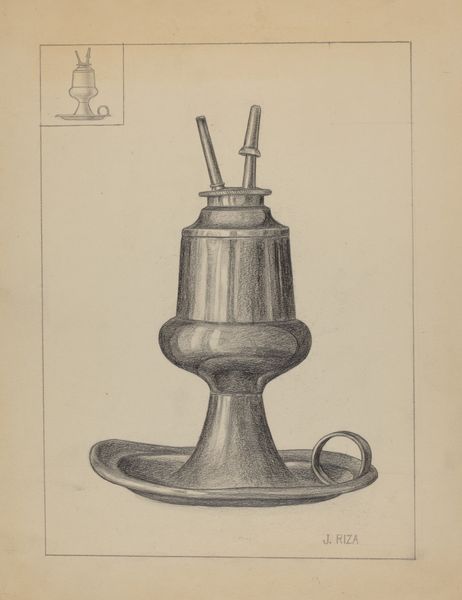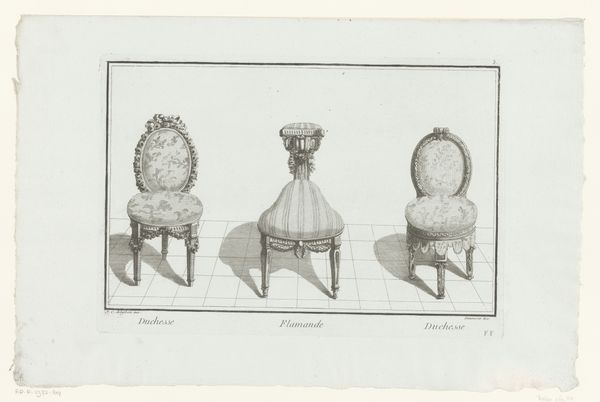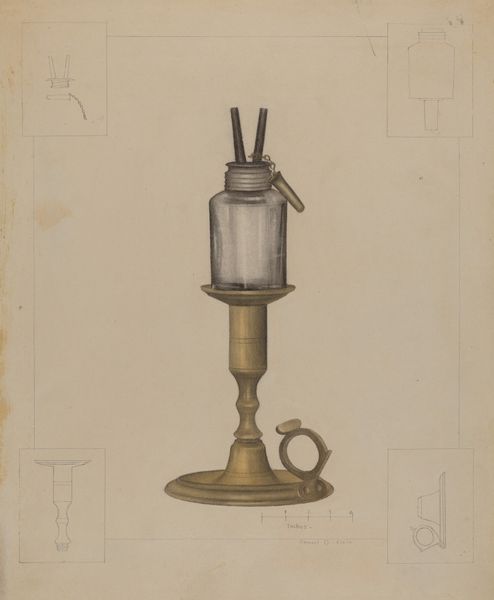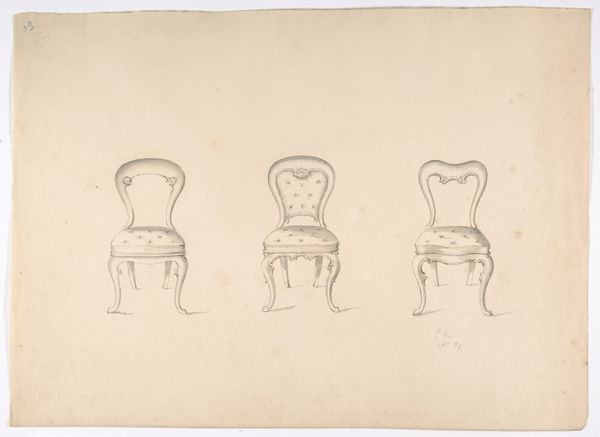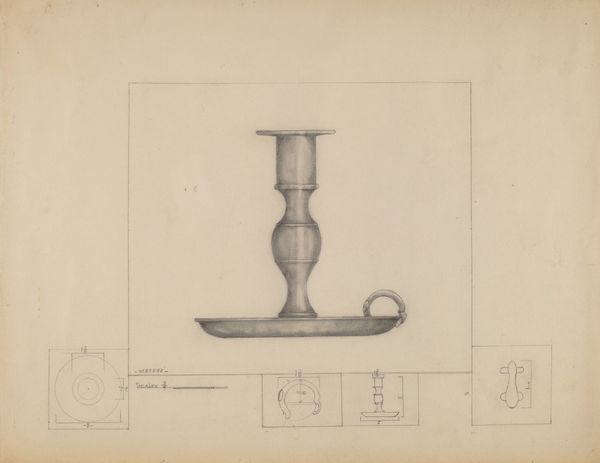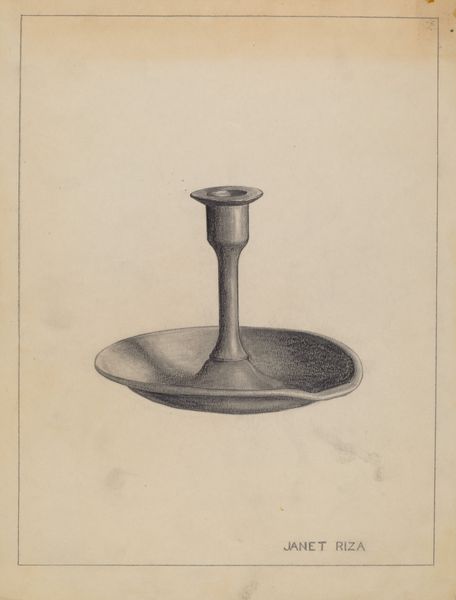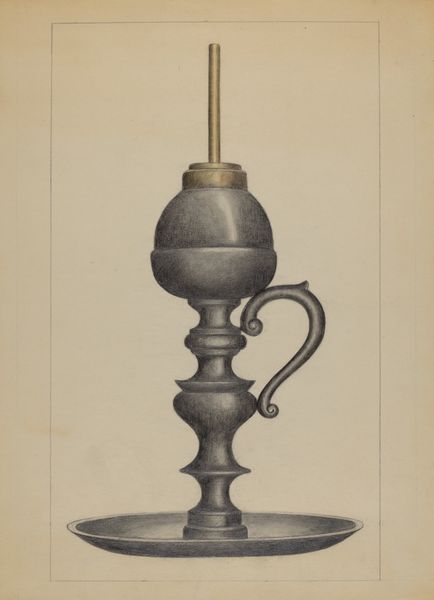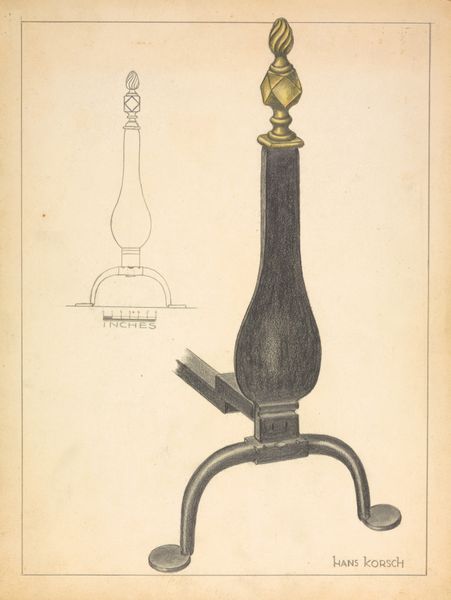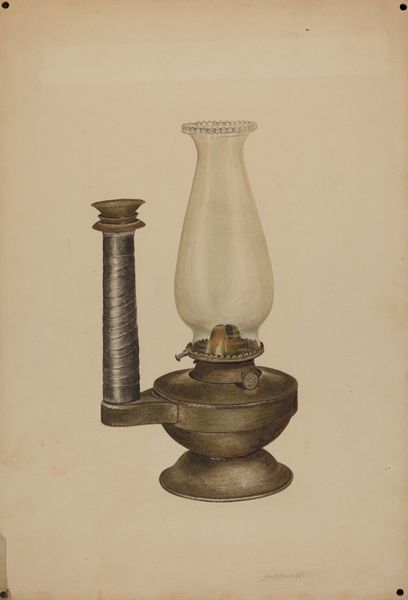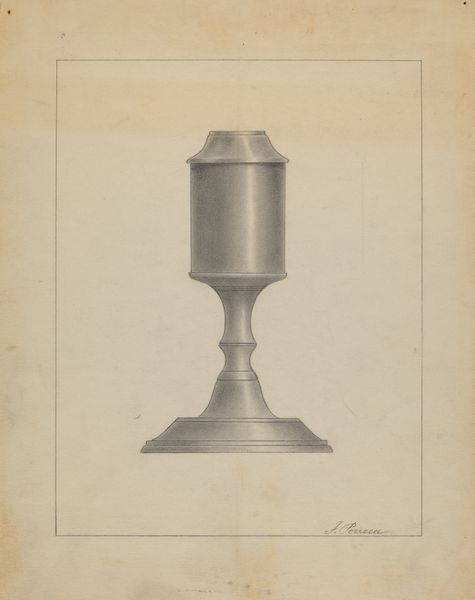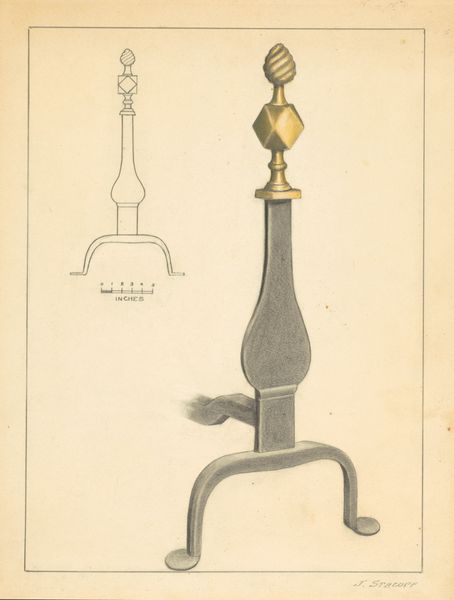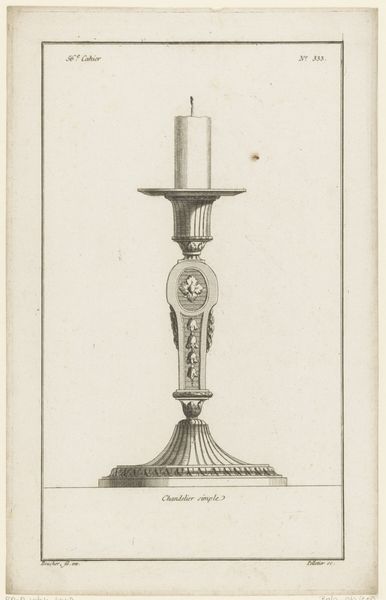
drawing, print
#
drawing
#
neoclacissism
# print
Dimensions: 5 3/4 x 7 3/8 in. (14.6 x 18.7 cm)
Copyright: Public Domain
This is Henri Auguste’s Design for a Cruet Frame, a drawing over graphite made with pen and brown ink, brush and gray wash. It is French, made at a time when Parisian silversmiths were celebrated for their exquisite craftsmanship. The cruet set was a staple of the formal dining table, holding essentials like oil, vinegar, and spices. Auguste's design, with its neoclassical motifs, reflects the period’s obsession with ancient Greece and Rome, a fascination fueled by archaeological discoveries. But why this revival of classical forms? It was a conscious break from the ornate, extravagant styles associated with the aristocracy, a visual statement aligning with the values of the Enlightenment: reason, order, and a return to simpler virtues. To fully understand this drawing, we need to research not only the artist's biography, but also the social and economic context of 18th-century France. Auction catalogues, inventories of aristocratic households, and treatises on taste all offer insights into the function and meaning of objects like this cruet frame. We can also consider the role of institutions such as the French Royal Academy of Painting and Sculpture, which helped to promote a unified national style.
Comments
No comments
Be the first to comment and join the conversation on the ultimate creative platform.
